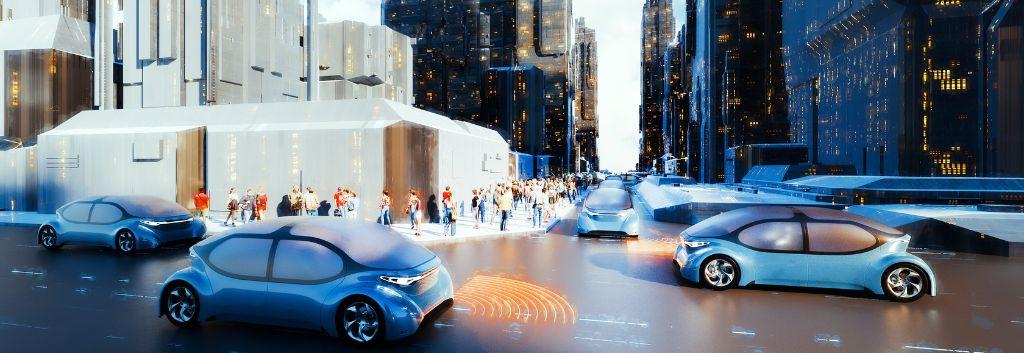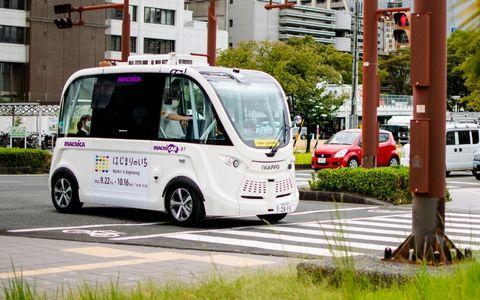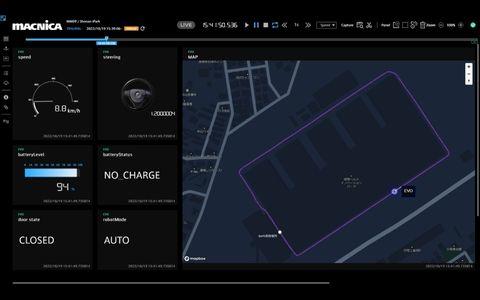
We will introduce the required mechanisms and related solutions for the practical application of mobility services (MaaS) that utilize autonomous driving.
Mechanism required for commercialization of autonomous driving
In order to commercialize autonomous driving mobility services in areas and facilities, it is considered important to create three mechanisms related to "function", "business" and "operation". Also, if even one of these is missing, it will be difficult to proceed with social implementation of autonomous driving.

Creating three mechanisms required for commercialization of autonomous driving
Function: Construction of a system compatible with autonomous driving
The creation of a mechanism related to "function" is the construction of a system that supports autonomous driving mobility services. In order to operate autonomous driving vehicles safely and securely, it is necessary to combine not only autonomous driving vehicles but also various technologies.
For example, in autonomous driving, where unmanned operation is assumed without a driver, operators in remote locations are required to manage the autonomous driving vehicles in order to monitor passengers and respond to trouble in emergencies. In order to achieve this, a data platform is required to acquire real-time information such as vehicle location information and camera images inside the vehicle and visualize them remotely.
Also, when operating a route with intersections by autonomous driving, it is required to automatically judge whether to move forward, decelerate, stop, etc. according to the sign of the traffic light. This is handled by a technology called "signal coordination," in which vehicles and traffic lights communicate with each other to acquire signal information in advance.
In addition, it is necessary to build a system that supports autonomous driving mobility services by combining various technologies, such as applications for vehicle reservation/dispatch and fare payment.
Business: Build a sustainable business model
Creating a system related to "business" is building a sustainable business model for autonomous driving mobility services. Since the operation of the service incurs costs, it is necessary to have a monetization mechanism that can be expected to be profitable.
Revenue from public transportation is common, but there are many cases where it is not possible to make a profit from the fare alone. Therefore, it is considered effective not only to provide mobility services as a means of transportation, but also to diversify income sources and optimize services by combining them with various fields.
For example, in an autonomous driving vehicle that does not have a driver's seat such as a steering wheel, accelerator, or brake, the interior space is designed to be large, so it is possible to install digital signage and other equipment inside the vehicle to distribute advertisements. As a result, we can expect diversification of income sources through advertising sales.
In addition, autonomous driving vehicles are equipped with various sensors such as cameras and LiDAR, and acquire information about the surrounding environment while driving. By using this information to understand the condition of roads, guardrails, utility poles, etc., it is possible to help automate the maintenance of social infrastructure.
In this way, it is necessary to build a sustainable business model for autonomous driving mobility services by combining various fields.
Operation: Sustainable Operation System
The creation of a system related to "operation" is the construction of an operation system that supports autonomous driving mobility services. There are various roles to operate a service, and it is difficult for a specific business operator to do it alone, so it is necessary to work with multiple partners to divide the roles.
As mentioned above, the operation of autonomous driving vehicles requires operation management by a remote operator. This will require the cooperation of local transport operators who specialize in vehicle operation management.
In addition, in handling vehicles, maintenance and maintenance such as regular legal inspections occur, so we will also cooperate with local maintenance companies.
Furthermore, in preparation for an accident, we may partner with an insurance company that offers an insurance program specializing in autonomous driving, and a leasing company to reduce the initial burden of introducing a vehicle.
In this way, it is necessary to build an operation system that supports autonomous driving mobility services by sharing roles through partner collaboration.
Solutions for Autonomous autonomous driving MaaS
MaaS support service
Total support for commercialization of autonomous driving

We support the practical application of mobility services that utilize autonomous driving vehicles. We provide total support, from proposals for optimal vehicle and system configurations to meet customer requirements, prior verification such as demonstration experiments, implementation work for autonomous driving, maintenance in operation, and maximization of introduction effects. We design the optimal service model according to various use cases and realize the utilization of autonomous driving.
Macnica Mobility Data Platform (Macnica Mobility Data Platform)
It is a platform that can realize the collection, transmission, and accumulation of mobility data in real time and after ensuring reliability. Accurately grasping large amounts of high-definition time-series data that changes over time can be useful for mobility operation management. It also provides an environment for rapid development and execution of various AI models in various fields.
Inquiry
If you have any questions about mobility services that utilize autonomous driving, please feel free to contact us here.

